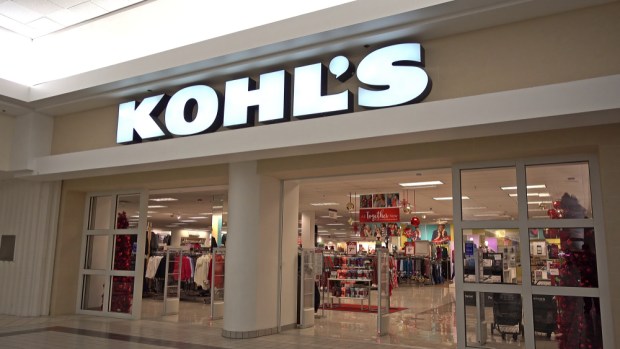How Kohl’s Is ‘Thinking Differently’ As It Moves On Millennial Shoppers

When Kohl’s decided to bring Amazon into its store locations about a year ago, many commentators wondered if the brand had made a big mistake. Given the “Amazon effect” that has blown through retail like a cold wind over the last decade or so, many speculated that the Kohl’s attempt to boost foot traffic was about to go down in history as inviting the fox to guard the henhouse.
But Michelle Gass, the new Kohl’s CEO as of May of this year, believes that kind of thinking – about Amazon specifically and about digital commerce in general – is what got brick-and-mortar retailers in trouble to start with.
“The big idea is that this is teaching us to think differently,” Gass noted in a recent interview.
And in the case of Kohl’s, that has meant thinking differently about its core customer – and who they want that person to be. Today’s Kohl’s shopper, on average, is between the ages of 35 and 44 – a younger base demographic than Walmart has, but an older base than Target’s core consumers, according to Kantar Retail’s ShopperScape.
Gass’ hope is to help push the Kohl’s base lower, as she is looking to draw millennial customers to the brand as their new go-to location for merchandise of all kinds.
“This is the quintessential Kohl’s shopper we want to see in the future,” she said.
Before Gass formally took the reins at Kohl’s a little over six months ago, she has had a long retail history, particularly when it comes to building products and offerings for young consumers – in some cases, really young consumers. Her first big gig was developing Crest for Kids for Procter & Gamble, and her next big job was at Starbucks, where she led the development of the Frappuccino. Gass been at Kohl’s since 2013, first serving as the chief customer officer and then the chief merchandising officer.
And while Kohl’s has struggled in the great retail reset that has been ongoing for the last few years, it has fared somewhat better than its counterparts in the segment. As of its last earnings report, same-store sales were up 2.5 percent, marking the fifth straight quarter of growth in that metric. Some of that success is structural. Unlike many of its competitors, nine out of 10 of the approximate 1,100 Kohl’s stores are in suburban strip malls rather than enclosed shopping malls, which has meant the retailer has been largely immune to the larger difficulties of mall-based physical brands.
But much of the success of Kohl’s has also been strategic, particularly as the retailer looks to expand and diversify its brand beyond traditional store venues. Its once derided partnership with Amazon has proved enough of a success that it is now accepting returns from the eCommerce giant in about 100 stores. The retailer has also tripled the number of Amazon pop-up shops being hosted inside Kohl’s stores, from 10 to 30.
The brand, according to President Sona Chawla, takes what it calls a “surgical approach” to innovations. That means Kohl’s tends to focus less on showy, eye-catching innovations in favor of back-end improvements to things like checkout and inventory management, which are more likely to positively (and invisibly) affect a customer’s shopping experience.
“You have to know who you are and then innovate to your core,” Chawla noted.
This holiday season, that means focusing on reducing lines in stores by offering handheld checkout devices. Kohl’s has also developed advanced infrastructure around inventory tracking using RFID (radio frequency identification) tags, which let the store know where virtually any piece of inventory is in real time. That data is also fed through machine learning software that analyzes the data to help store managers figure out how to stock the most efficient and desirable inventory for their location. That means no two Kohl’s stores will ever stock the exact same range of goods, and that the store manager has a great deal more power to customize the store to meet local consumers’ needs.
“The store manager is CEO,” Gass noted.
As for what is next for the retail brand: Kohl’s is both trying new things and staying focused on what works today. On the new front, the retailer aspires to be a destination for beauty products. Today, beauty only represents about 2 percent of total sales, far below the targeted goal of 5 percent. But upgrades are underway, both in the brands offered – Ralph Lauren’s Polo fragrances and Gucci’s Bamboo perfume have recently joined the inventory lineup – and the design of the spaces where they are sold.
The brand is also expanding its plus-sized activewear lineup and experimenting with higher price points. For the holiday, it has expanded its toy offerings and even added a Santa Claus to some locations for photo ops.
The current Kohl’s brand identity may not be as a haven for hipper young shoppers, but Gass believes that, if steered correctly, it could be. In many ways, she noted, Kohl’s is well-positioned to meet the needs of the average shopper, and the average shopper at many ages.
“We are the middle,” Gass said of Kohl’s, which is headquartered outside Milwaukee. “We’re Middle America. We want to own the middle.”
